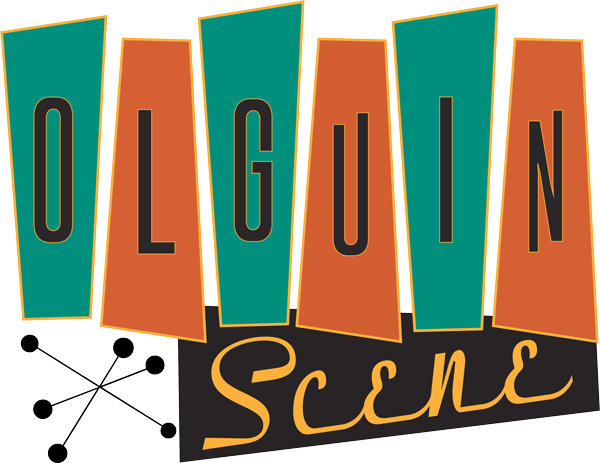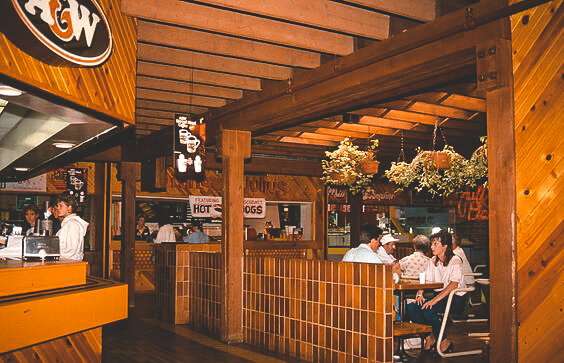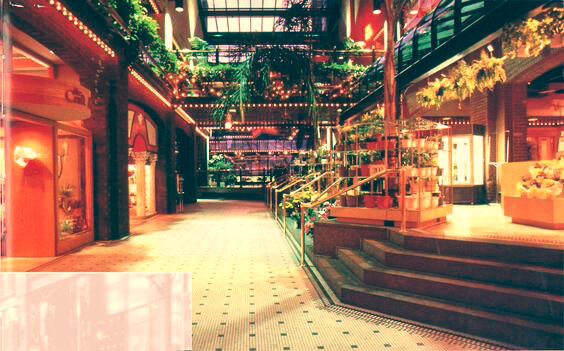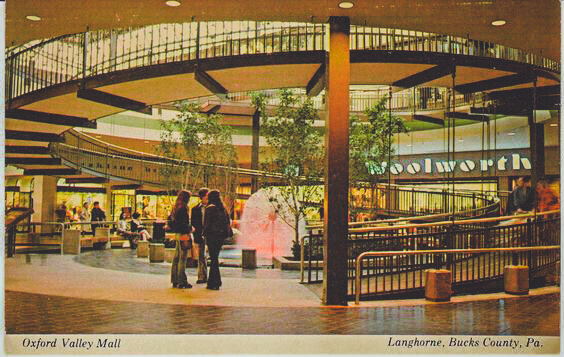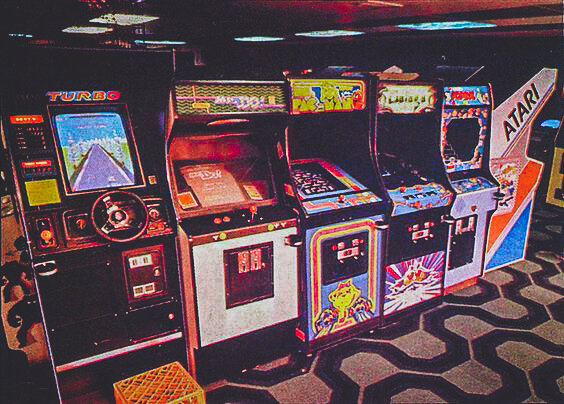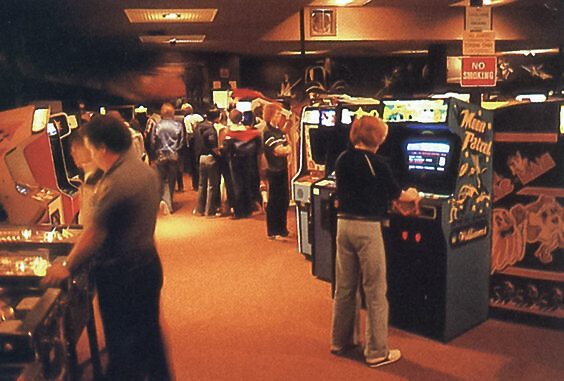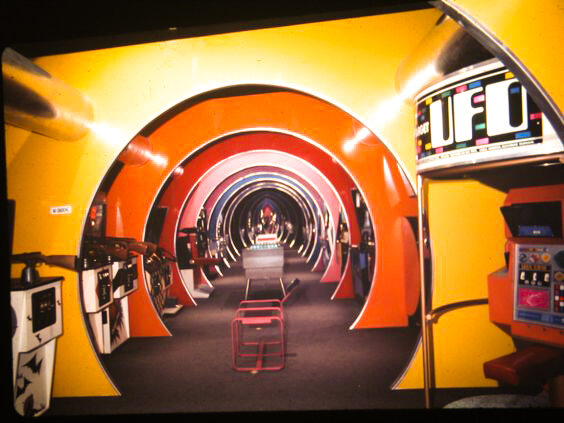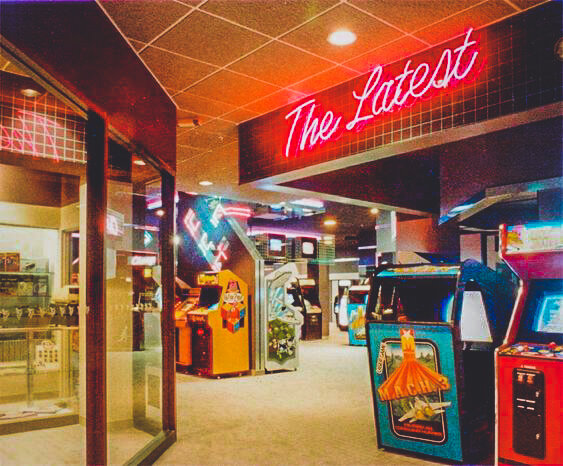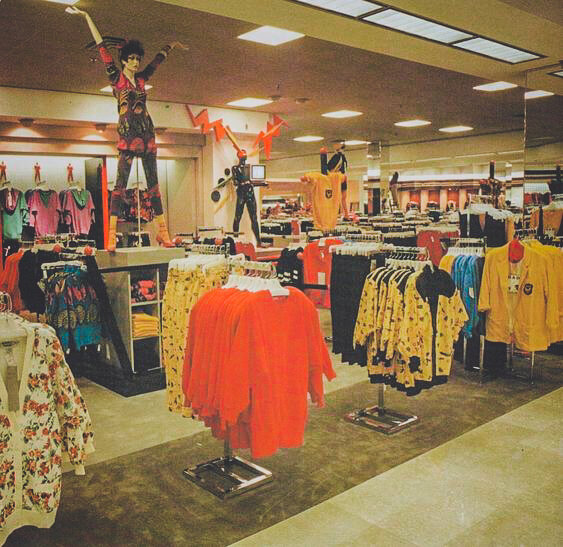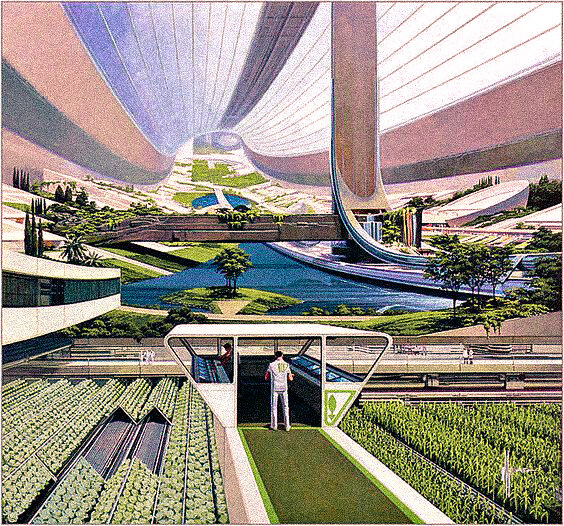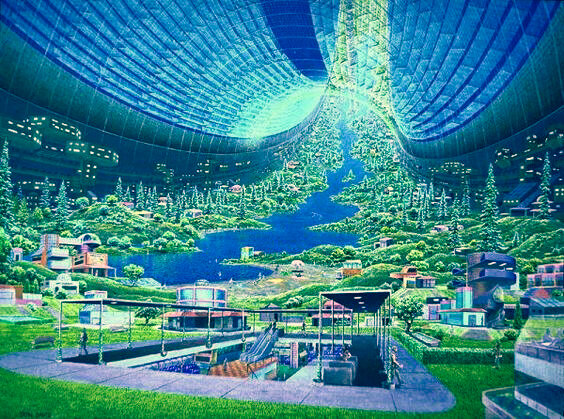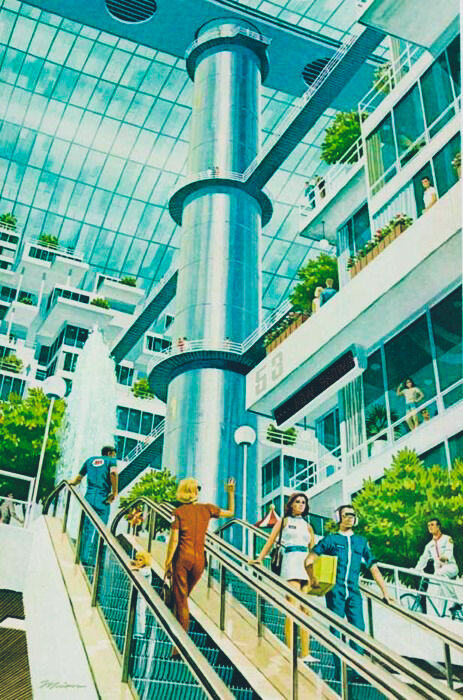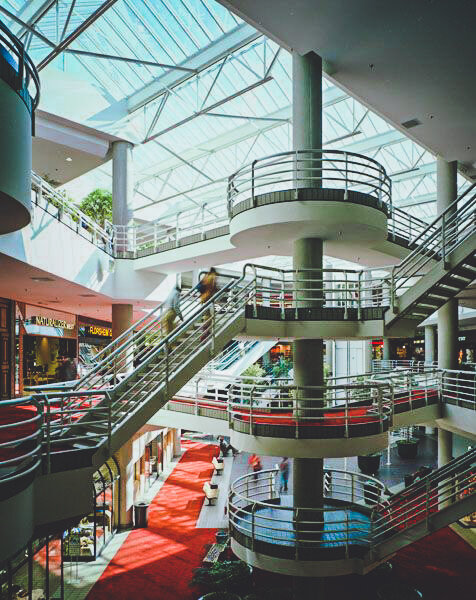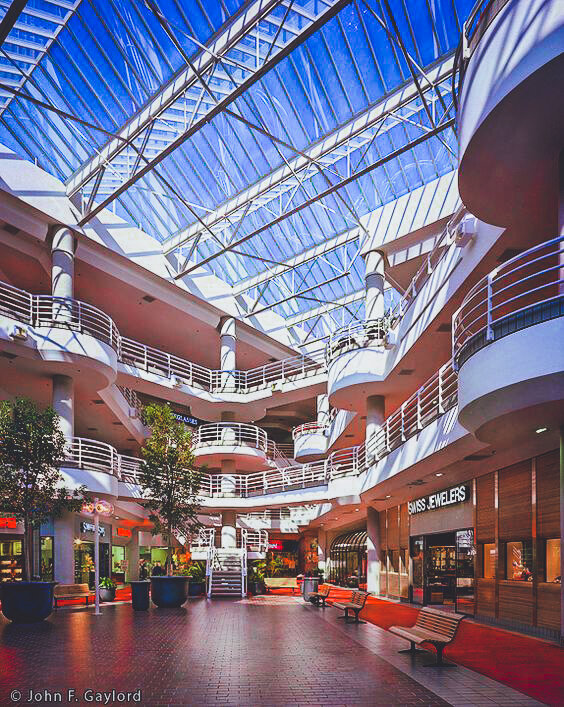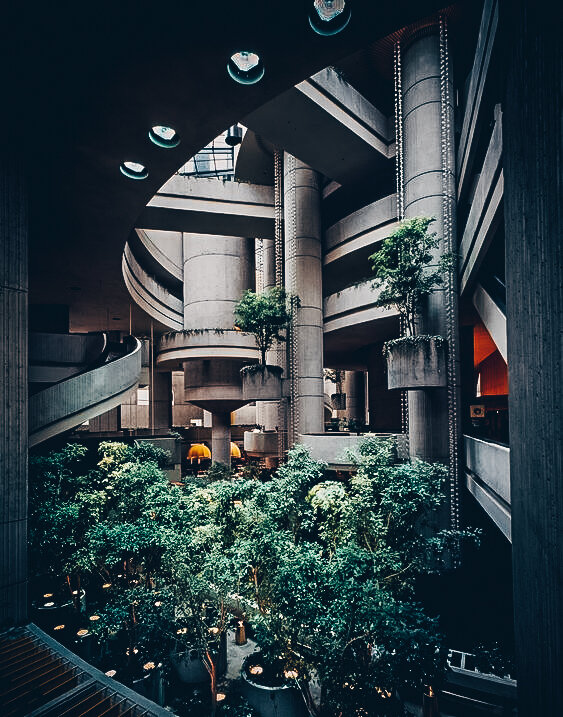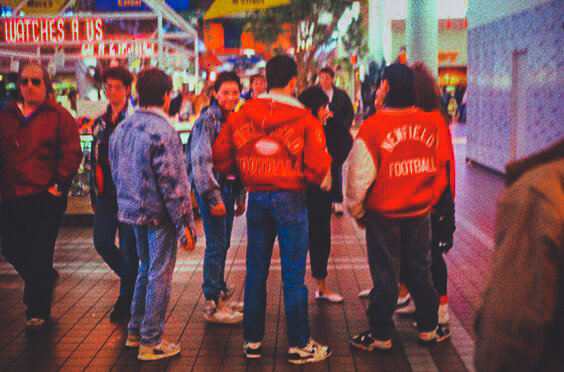Food, Fashion, Fun - the Mall had it All!
I was scrolling through Pinterest looking at cool abandoned places and I came across a pic of an abandoned mall. Kinda spooky, sorta sad, but nothing exceptional. Then Pinterest showed pictures of other malls. Some abandoned, some modern and bustling, but something stuck out - a pic of the interior of a mall in the heyday of malls; the totally rad 1980s.
I clicked it, and I felt like I discovered a lost treasure as my feed was nothing but pics of crazy malls shining in their prime!
Then I saw a pic of a long-gone mall in our local Pasadena area in its prime: Plaza Pasadena. I went there a lot as a kid. It didn’t last past the 1990s and it got fairly janky towards the end.
So it was great to remember what it was like in the 80s again.
Memories flooded in with a tubular wave of nostalgia!
In the 1980s you didn’t always have a camera built into a tiny supercomputer in your pocket like we have today. There were small enough cameras to cram in your tight stonewashed Levi’s, but film and developing would cost money, you only got 24 or 36 images per roll, and then you had to wait and develop them into pictures, and half the time they didn’t even come out. (A month later: awe, bummer man!) Most people just wouldn’t think of “wasting” pictures of the inside of the mall, unless maybe you were the architect or shop owner. So it was just fascinating to me to see pictures of the mall in the good old days!
My family liked going to the mall, but I absolutely loved it. There were cool toy stores, Mrs. Fields, See’s Candy, Radioshack, and my favorite, the ARCADE! A couple of rounds of “Golden Axe” was TOTALLY worth walking through all of those other boring stores (like getting slacks from JC Penny’s or school shoes from Foot Locker.)
It wasn’t just the promise of a cookie or a video game for good behavior either. I just liked going to the mall. L.A. was mall central in the 1980s and we went all over from the Santa Anita Mall, to the Glendale Galleria, to Plaza Pasadena and they all had their own unique charm.
These places seemed absolutely massive to me then! They were these great palaces of shopping. An airconditioned fantasyland. The vibe was different than it is today.
It wasn’t just a place where you grabbed what you needed and scooted out. You stayed awhile and browsed. Now, with the exception of the department store, the mall is something you have to go to because it’s the only place with certain items you need. This made it fun but a very crowded shopping environment.
I remember it would be so crowded that the mall could take chances on different kinds of specialty shops I guess. We’re talking glass blowers, punk rock music stores, art supply shops, music box stores, potpourri/candle shops, cobblers, glamor shot style photography studios, and other random stuff you just wouldn’t see in the mall anymore.
MTV reigned supreme then. Everything young and cool revolved around music videos in pop-culture and the mall was no exception. Fashion stores could be so specific as to focus on a genre of music and the clothes and brands associated with that in every way. Love hip-hop? We got your tracksuits, parachute pants, and kanga hats. Love heavy metal? We got Wilson’s Leather for fringed jackets, Doc Martin’s, and studded belts. With decor like a happening dance club with music videos blaring on TV making it seem like you were just an outfit away from being a pop princess and in Madonna’s next music video there was Wet Seal, or Miller’s Outpost.
Speaking of which, VHS was still new! Video stores in the mall usually had TVs playing the latest blockbuster movie in stereo and were decorated like a movie theater with neon posters, complimentary popcorn, and cool teenage staff willing to talk about the latest and greatest thing with customers. It all made it seem like you were going to bring the movie theater experience home if you buy the latest movie there. (Never mind that a “big” TV was like 36 inches, VHS is less than SD quality and no surround sound to speak of); but I digress...
A lot of malls had a stage with local performers around here in L.A. filling the mall with music and cheering crowds. With live music, throngs of people moving around, eating crazy snacks, it was almost a theme park kinda vibe.
It reminded me of Tomorrowland or something!
In fact, my elementary school had this book in the library for some reason. :
The book shows renderings of what it claimed were real NASA commissioned projects in the 1970s imagining what space stations might look like in the future.
These were giant spinning wheels with artificial gravity complete with urban, suburban, and rural areas; under a glass roof. Like an indoor greenhouse/biosphere type of thing. Looking at the amazing pictures in this book, it reminded me of something… I knew another giant glass-roofed structure that looked just like it, the mall!
I remember being on the upper floor walkways of the Plaza Pasadena looking up at the skylights and imagining space out there. Imagining the mall itself and everyone in it was part of one of these giant stations out in space somewhere in its own little community, complete with a shopping district.
I saw all the cool eighties teens hanging out and imagined how cool and futuristic the mall was going to be when I was a teen.
An awesome podcast I really Iike called 99% Invisible tells about the history of malls.
The inventor of the modern idea of the mall, Victor Gruen said he wanted to recreate the experience of town squares he remembered from Europe.
The center of town usually had a small street with a Townsquare surrounded by shops. These were car-free areas where people would gather, stroll, and it was much more than just a shopping district, it was what gave the town it’s character. It was the town’s heart and soul, its center. He hated cars and felt that they took away this sense of community.
As an architect, he thought he could upgrade this idea in America by recreating the town square within a giant climate-controlled building. People would drive to the mall but then have to park and enter this modern shopping palace. Two buildings, two stories tall dived by a long central pedestrian walkway and central courtyard enclosed under a glass roof was his basic mall idea. But rather than just be an enclosed street it would be filled with community areas with planters and fountains in a modern beautiful space.
He thought the stores should be reflective of the community and decorated in a modern and exciting way. From the moment you walked in it’s supposed to take your breath away with excitement!
He sold this idea by claiming shoppers would be so overwhelmed by the spectacle that their shopping defenses would be lowered and it would make them more susceptible to spending. (It’s actually called the Gruen Effect.)
Not only this, but the sheer size and public gathering spaces would make it an integral part of the community like Main Street USA.
Minnesota was the first city to go for the idea since the weather is so bad there, and they liked the climate control aspect. Southdale Center in Edina opened in the late 1950s and was a huge success.
Over the next 15 years, indoor malls became all the rage especially in places too hot or too cold; which makes an indoor shopping district that much more appealing. These malls were exactly the self-contained town squares under glass dreamed up by the original designer Victor Gruen.
So when I was imagining the mall as a space station shopping district, I guess I wasn’t too far off from the original inventor’s idea of the self-contained shopping center.
I know you’re thinking - “hey, my local mall doesn’t look like the ones in those pictures!” They’re just a giant box in plain colors and boring decor with the same overpriced stores that every other mall (if it’s even still open) all have.
Well, it probably did look like that at some point. In the late 70s and 80s there were big-box stores but they kinda sucked. Not just boring to shop at but they didn’t have the variety of stuff they have today. Your Kmarts, Targets, and Walmarts were like glorified Walgreens. What clothes and shoes they did have were cheap and dorky and the selection of housewares, electronics, and toys was all pretty limited.
So if you wanted stylish clothes, shoes, or anything beyond basic drug store type stuff, you kind of had to go to the mall or track down a mom and pop shop in the phone book. (Most of us just went to the mall.) All was well until the 1990s. Big box stores did start selling more name brands with a bigger variety and at cheaper prices. They all started competing for who could be the cheapest (thanks to Walmart trying to undercut everyone.) The prices at the mall now seemed ridiculous, compared to how much cheaper you could get it for elsewhere. A lot of the shops that sold stuff you could find at the big box stores for cheaper and the weird glass-blowing type specialty stores finally closed.
Shops geared towards young people still did ok, so soon the mall was filled with more hip, trendy stores. This caused groups of rowdy teens to just hang out and not actually buy anything. People complained that it chased away families and upscale clientele. Not only this but did I mention there was a recession going on at this time too? The mall had to rebrand quickly!
It was in this time during the early nineties that a ton of malls remodeled and rebranded. They were gonna get rid of the fluff, chase out the teens, and make it simpler to navigate. I guess they thought if they made the mall more like a regular store then the teens would stop hanging out and families would return.
They switched out colorful hangout inducing decor, for plain neutral colors. They took out all the fun planters and fountains and seating areas that took up space and would encourage loitering and replaced them with those awful mall kiosk carts with pushy salespeople and just a few benches for old people. They cut down on the community performances and special events. They stopped taking chances on mom and pop shops and most of the stores became corporate Hot Topic type stores that were available at any other mall. They changed their names from “mall” or “galleria” to names like “fashion park” or “pavilion” and tried to put on an upscale vibe.
In other words, they took out what made the mall special in the first place. The inventor’s idea of the indoor town square with community stores and spaces in a modern, exciting building was now gone. This is why your local mall looks the way it does.
From a retail palace for the people to sterile soulless boxes with high prices and pushy salespeople, there were one or two nice malls that hung around but the magic was somehow gone and the late 90s and early 2000s would already be the end of the road for some malls. I was in my late teens at the time and this seemed apparent.
The Plaza Pasadena, the mall I imagined would be so cool and futuristic, couldn’t even manage to say the same. Most of the stores had closed and the ones that stayed open looked sad and rundown. The clientele was creepy. This was NOT the cool hangout I looked forward to as a kid. I wasn’t sad though because there was a new idea in town.
In some cities in the late 90s they sold entire blocks of old buildings, gutted them, and filled them with mall stores in a hybrid mall / main street style.
This is what they did in Old Town Pasadena a few blocks away from the Plaza Pasadena mall on the famous Colorado Blvd. The stores were newer, nicer, reflected 90s trends, and had hang-out spots. The Plaza Pasadena mall down the street was trapped in the past and already a shell of its old self. Old Town Pasadena was the raddest place to hang out in my late teens and early 20s. It was like a mall and a real Main street, housed in historic buildings with a vibrant downtown sort of vibe. It was quite a world away from the now sad-mall status of the Plaza Pasadena just a few blocks down the road.
Santa Monica did something similar on 3rd street with the 3rd Street Promenade, also The Americana in Glendale and other cities across the country did the same. These places got really popular. Then, The Grove in West LA opened. This was a Hollywood fantasy mall that wasn’t just a mall or a town square but a whole shopping center neighborhood with apartments, restaurants, movie theaters, and upscale shops. The success of that made more of these pop up in other places. This was it for the old indoor mall. They had to double down on remaining the same or change with the times.
Misreading that the draw to these new places was shopping outdoors and not the cool stores a lot of malls decided to do something drastic. They closed and took the roof off to be like these other places.
Any semblance of the old idea of the indoor perfect climate-controlled shopping palace is gone. Most of the indoor malls have long since vanished.
Here in LA, some remain though. Locally the Santa Anita Fashion Park is still indoors and still pretty busy. Some old restaurants and shopping standbys remain, but what keeps its heart pumping are the new stores and restaurants that serve the local wealthy Asian community. Same thing with the Latino community down in Montebello Town Center and so forth. These were keeping indoor malls alive. That was until COVID-19.
It’s unknown if any retail (the way we knew it) can survive this; let alone the already struggling malls. And if and when life gets back to normal, is anyone gonna want to spend time in an enclosed building with hundreds of people and high prices? It may be down to a few big-box stores left to shop at after all this now that we’re all good and used to ordering everything online. It’s unknown what will happen after COVID and political and social unrest. Shopping in markets is a human tradition thousands of years old, but is that something everyone has gotten past? Are we really ready to be like the Eloi, just having everything come to us at home?
Obviously, there are more important things in the world to think about right now. But some nostalgia can be grounding. It can help you remember where you came from and what is important to you. In this unpredictable pandemic, racial, and politically divided world, being able to shop together again seems like it will be a good indicator that life will return to normal.
We do not know what the future holds for malls, so thanks for taking a moment and remembering how cool they used to be with me.
Thanks for reading,
-Mike Olguin
June 14, 2020
